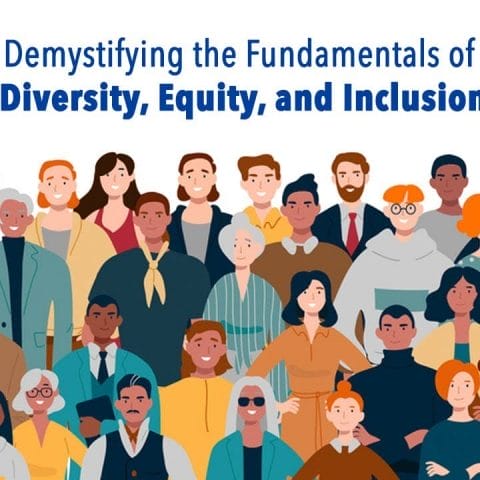Did you know that organizations that prioritize diversity and inclusion are 35% more likely to have financial returns higher than their industry average? Workplace diversity is not just a buzzword, but a key driver of success in today’s business landscape. By implementing effective diversity training programs, companies can foster an environment that celebrates diversity, promotes teamwork, and maximizes the potential of every individual.
Key Takeaways:
- Diversity training programs can lead to financial success for organizations.
- Workplace diversity is essential for creating an inclusive and productive work environment.
- Effective diversity training promotes teamwork and maximizes individual potential.
- Organizations that prioritize diversity and inclusion reap tangible benefits.
- Diversity training programs are crucial for staying competitive in the business world.
What is Diversity Training?
Diversity training plays a crucial role in increasing awareness and appreciation for different types of diversity, while also equipping individuals with strategies to enhance interpersonal and communication skills across diverse settings.
This intentional professional training aims to foster a more inclusive work environment, prevent civil rights violations, promote better teamwork, and ensure workplace inclusion. By developing the necessary skills to work and interact with people from diverse cultural backgrounds, employees can contribute to a more harmonious and respectful workplace.
Diversity training encompasses various types of training programs, including diversity setting with perspective-taking and diversity training with goal setting. These programs help individuals understand and respect different perspectives, develop empathy towards others, and build effective communication across diverse groups.
The benefits of diversity training are far-reaching. It not only educates employees about diversity-related issues but also enhances cultural competence, encourages respectful dialogue, and fosters a sense of belonging among team members. By creating an inclusive work environment, organizations demonstrate their commitment to diversity and set a strong foundation for collaboration and success.
A well-designed diversity training program aligns with the organizational goals of promoting diversity and inclusion. It helps companies attract and retain diverse talent, comply with legal and moral standards, develop essential skills for leadership, and enhance overall management effectiveness.
Essential Elements of Successful Diversity Training
Successful diversity training programs incorporate several key elements to ensure their effectiveness. By including these elements, organizations can maximize the impact and outcomes of their diversity training initiatives. The following are the essential elements of successful diversity training:
- Clearly defined objectives: Diversity training should have clearly defined objectives that outline the purpose, goals, and desired learning outcomes of the program. This ensures that participants understand what they are expected to achieve through the training.
- Facilitation of key acts: Diversity training should facilitate key acts such as active understanding, change of perspectives, reflection, realization, and journey. These acts help participants develop a deeper understanding of diversity and inclusion and promote the necessary mindset shift for creating an inclusive work environment.
- Effective methodology: The training process should consider the methodology and delivery format. Various methodologies, such as diversity setting with perspective-taking and diversity training with goal setting, can be employed to engage participants and enhance their learning experience.
- Supportive and safe environment: Creating a supportive and safe learning environment is vital for diversity training. Participants should feel comfortable stepping out of their comfort zones and engaging in open and honest discussions. This fosters a sense of psychological safety and encourages active participation and learning.
- Experienced and skilled trainers: The trainers’ experience, skills, and attitudes play a crucial role in guiding participants through the diversity training journey. Trainers should possess a deep understanding of diversity and inclusion issues, along with the ability to facilitate meaningful and impactful discussions.
“Effective diversity training programs incorporate clear objectives, facilitate key acts, utilize effective methodologies, provide a supportive environment, and are led by experienced trainers.” – Diversity Training Expert
By incorporating these essential elements into diversity training programs, organizations can enhance the effectiveness and impact of their initiatives, fostering a more inclusive and equitable work environment.
| Elements | Description |
|---|---|
| Clearly defined objectives | Diversity training should have clearly defined objectives that outline the purpose, goals, and desired learning outcomes of the program. |
| Facilitation of key acts | Diversity training should facilitate key acts such as active understanding, change of perspectives, reflection, realization, and journey. |
| Effective methodology | The training process should consider the methodology and delivery format, utilizing effective methods such as diversity setting with perspective-taking and diversity training with goal setting. |
| Supportive and safe environment | Creating a supportive and safe learning environment is vital for diversity training. |
| Experienced and skilled trainers | The trainers’ experience, skills, and attitudes play a crucial role in guiding participants through the diversity training journey. |
Where to Start with Diversity Training?
Before embarking on a diversity training program, it is crucial to lay the groundwork for creating an inclusive work climate. Take the time to identify the diversity issues that exist within your organization, acknowledging the unique challenges and opportunities that come with a diverse workforce. By understanding these issues, you can tailor the training program to address them effectively.
Consider involving diverse groups in the training process. Engage with employees from different backgrounds to better understand their perspectives and experiences. This will foster a sense of inclusivity and ensure that the training program incorporates the diverse voices of your workforce.
When developing the diversity training program, you may choose to create modules based on organizational needs or different topics in diversity training. These modules can cover a range of themes, such as unconscious bias, cultural competency, or building inclusive teams. By organizing the training into modules, you can customize the program to target specific areas of improvement.
Before implementing the training, it is essential to engage in open and honest discussions about the current diversity issues within your organization. Encourage employees at all levels to share their experiences and perspectives. These discussions will help create awareness and set the stage for meaningful change.
Highlight the benefits of diversity training for all members of the organization. Emphasize how diversity training can enhance collaboration, innovation, and productivity. By creating an inclusive work climate through diversity training, organizations can attract and retain diverse talent, foster a sense of belonging, and ultimately drive success.
For more insights on the importance of diversity training, check out this article: Why Diversity Programs Fail.
“Diversity training sets the stage for a more inclusive work environment, but it’s vital to tackle the underlying diversity issues and create targeted training modules.” – Jane Williams, Chief Diversity Officer.
As you embark on your diversity training journey, make a list of topics to develop and include in the training program. Consider incorporating elements such as understanding implicit bias, fostering cross-cultural communication, promoting diversity in leadership, and creating inclusive team dynamics.
By taking the time to reflect, identify diversity issues, and create targeted training modules, organizations can lay a strong foundation for a successful diversity training program that fosters an inclusive work climate and drives positive change.
Resources for Diversity Training

When it comes to diversity training, there is no shortage of valuable resources to support your organization’s efforts. Whether you prefer books, articles, consultants, organizations, or videos, there are options to suit your unique needs and preferences. Here are some recommended resources that can provide valuable guidance and expertise:
- The Diversity Training Handbook: A Practical Guide to Understanding and Changing Attitudes by Paul Clements and Jerri Jones
- Two types of diversity training that really work by Alison Reynolds and David Lewis in Harvard Business Review
- A GEM for increasing the effectiveness of diversity training by Felice K. Cocchiara, M. Laura Connerley, and Myrtle P. Bell in Human Resource Management
These resources offer diverse perspectives and strategies for implementing effective diversity training programs. They provide insights into understanding and changing attitudes, different approaches to diversity training, and enhancing the effectiveness of training initiatives. Written by industry experts and published in reputable sources, these resources offer evidence-based practices and valuable insights.
In addition to these written resources, there are also consultants and organizations specialized in diversity and inclusion training that can provide expert guidance tailored to your organizational needs. These professionals bring extensive experience and knowledge in fostering diverse and inclusive work environments.
Another valuable resource for diversity training is videos. They provide dynamic and engaging content that can facilitate learning and generate meaningful discussions. Videos featuring real-life examples and case studies can help participants understand the impact of diversity and inclusion in different contexts.
Overall, the diversity training resources available offer a wide range of perspectives, strategies, and insights to enhance your organization’s diversity training initiatives. By utilizing these resources, you can ensure your diversity training program is well-informed, comprehensive, and impactful.
Recommended Diversity Training Resources
| Resource | Author(s) | Publication |
|---|---|---|
| The Diversity Training Handbook: A Practical Guide to Understanding and Changing Attitudes | Paul Clements and Jerri Jones | Book |
| Two types of diversity training that really work | Alison Reynolds and David Lewis | Harvard Business Review |
| A GEM for increasing the effectiveness of diversity training | Felice K. Cocchiara, M. Laura Connerley, and Myrtle P. Bell | Human Resource Management |
The Importance of DE&I Training
Diversity, equity, and inclusion (DE&I) training programs play a crucial role in creating inclusive companies that value and embrace diversity. These programs are designed to train employees in uncovering, identifying, and correcting biases that have historically hindered the hiring and promotion of underrepresented groups. By promoting diversity and inclusion, DE&I training aims to ensure that all individuals, irrespective of their background, are represented, treated fairly, and feel welcome and supported within the organization.
DE&I training goes beyond surface-level tolerance and aims to address biases and prejudice deeply ingrained within organizations. This training fosters empathy and understanding among employees, enabling them to work collaboratively and respectfully with colleagues from diverse backgrounds. By promoting an inclusive work environment, DE&I training maximizes the potential of diversity and ensures that every individual’s unique perspectives and contributions are valued.
The Benefits of DE&I Training
The benefits of DE&I training are manifold. Firstly, such training helps organizations to build a workforce that reflects the diversity within society, enabling them to tap into the perspectives and talents of individuals from different backgrounds. This diversity of thought and experiences fosters innovation, creativity, and problem-solving capabilities within teams.
DE&I training also helps to address unconscious biases and prejudices that can hinder effective decision-making and collaboration. By raising awareness of these biases, employees can actively work to mitigate their impact and ensure fair and equitable treatment for all.
Moreover, DE&I training promotes a culture of inclusivity, where employees feel safe and supported to bring their whole selves to work. This not only enhances employee morale and job satisfaction but also improves retention rates and reduces turnover, thereby saving organizations both time and resources.
Creating Inclusive Companies
DE&I training is an essential step towards creating inclusive companies where diversity is celebrated and valued. It helps to break down barriers and build bridges between different groups, fostering an environment of mutual respect and understanding.
“DE&I training is not a one-time event but an ongoing journey towards building inclusive organizations.”
By equipping employees with the knowledge and skills necessary to navigate diverse workplaces, DE&I training promotes effective communication, teamwork, and collaboration. It enables employees to develop cultural intelligence and establishes a foundation for building strong work relationships with colleagues from diverse backgrounds.
Inclusive companies are not only more appealing to job seekers, but they also benefit from a wider talent pool, allowing them to attract and retain top talent. In addition, studies have shown that diverse teams outperform homogeneous ones, leading to increased creativity, productivity, and profitability.
Promoting Diversity and Inclusion
One of the primary goals of DE&I training is to promote diversity and inclusion within organizations. This training provides the tools and strategies necessary to challenge existing biases, dismantle barriers, and create pathways for underrepresented groups to succeed.
DE&I training addresses systemic issues of inequality by nurturing an environment where all employees have an equal opportunity to thrive and contribute to the organization’s success. It helps organizations in developing policies, practices, and programs that promote equitable access to resources and opportunities for all employees, regardless of their background.
By endorsing diversity and inclusion, organizations not only foster a sense of belonging and empowerment but also build stronger relationships with their employees, customers, and stakeholders. It sends a powerful message that the organization values individual differences and is committed to creating a fair and inclusive workplace.
Creating an Effective DE&I Training Program

A well-designed DE&I training program creates an inclusive work environment, strengthens employee morale, enhances customer satisfaction, and drives business success. However, it is crucial to implement the program responsibly to avoid negative outcomes. To create an effective DE&I training program, organizations should consider the following best practices:
1. Tailoring the Program to Organizational Objectives and Challenges
Each organization has unique diversity and inclusion objectives and challenges. To deliver impactful DE&I training, it is important to customize the program to address specific needs. Conduct an organizational assessment to identify areas where diversity and inclusion can be improved. This will help align the training content with organizational goals and ensure relevance to employees.
2. Integrating DE&I Training into the Company Culture
DE&I training should not be treated as a one-time event. It should be integrated into the organization’s culture and ongoing initiatives. This can be achieved by incorporating diversity and inclusion messages in internal communications, leadership practices, and performance evaluations. By embedding DE&I principles into the company culture, employees are more likely to embrace and apply what they learn during the training.
3. Using Real-Life Examples to Illustrate Concepts
Real-life examples help employees understand the practical application of DE&I concepts. Use case studies, success stories, or diverse employee testimonials to demonstrate how diversity and inclusion positively impact individuals and organizations. By grounding the training in real-world situations, participants can better relate to the content and grasp its significance.
4. Seeking Professional Help for Program Development and Implementation
Developing an effective DE&I training program requires expertise and experience. Consider engaging external consultants or trainers who specialize in diversity and inclusion. They can provide guidance in assessing organizational needs, designing tailored training modules, and facilitating impactful learning experiences. Their insights can help shape the program and ensure its alignment with best practices.
5. Incorporating DE&I Training into a Series of Related Initiatives
DE&I training should not stand alone. It should be part of a comprehensive approach to diversity and inclusion. Assemble a portfolio of initiatives that collectively reinforce the importance of DE&I. This may include employee resource groups, mentorship programs, diversity recruitment strategies, or community partnerships. The integration of DE&I training with other initiatives strengthens its impact and fosters a culture of inclusivity.
By following these best practices, organizations can create an effective DE&I training program that drives positive outcomes. The program should be designed to address specific challenges, integrated into the company culture, supported by real-life examples, and developed with professional expertise. Additionally, it should be part of a broader effort to promote diversity and inclusion in all aspects of the organization.
Learn more about DE&I training and its role in creating inclusive work environments.
Extending and Maintaining DE&I Training
DE&I training has proven to have a positive impact on employees’ knowledge, attitudes, and behaviors. However, to ensure long-term effects and sustained impact, it is crucial to extend and maintain the training beyond the initial program.
Continuous learning and reinforcement are key to keeping the principles of diversity, equity, and inclusion ingrained in the company’s culture. By integrating DE&I initiatives into the fabric of the organization, employees will receive ongoing support and guidance.
One effective approach is to incorporate diversity and inclusion practices into various programs, events, and experiences within the company. This can include:
- Mentorship programs that promote diversity and inclusion
- Employee resource groups centered around different underrepresented groups
- Regular diversity and inclusion workshops and seminars
- Leadership training with an emphasis on DE&I
By offering continuous opportunities for employees to engage with and learn about diversity and inclusion, organizations can reinforce positive behaviors and attitudes.
Continuous learning is crucial for maintaining the long-term effects of DE&I training. This can be achieved through ongoing professional development opportunities, access to educational resources, and regular discussions on diversity and inclusion topics.
Moreover, providing platforms for employees to share their experiences and perspectives can foster a sense of belonging and promote a culture of inclusivity.
The Power of Continuous Reinforcement
Reinforcing the principles of diversity and inclusion is essential to ensure that the positive impact of DE&I training endures over time. Organizations can achieve this by:
- Recognizing and celebrating diverse achievements and contributions
- Providing feedback and recognition for behaviors aligned with diversity and inclusion values
- Creating accountability mechanisms to address instances of bias or discrimination
- Regularly evaluating the effectiveness of DE&I initiatives and making necessary adjustments
Through continuous reinforcement and evaluation, organizations can create a culture where diversity and inclusion become deeply embedded in all aspects of the company.
| Method | Benefits |
|---|---|
| Regular Diversity and Inclusion Workshops and Seminars | – Provides ongoing education and awareness – Reinforces understanding of diversity and inclusion – Encourages continuous learning and growth |
| Employee Resource Groups | – Fosters a sense of belonging and community – Enhances support for underrepresented groups – Provides a platform for diverse voices to be heard |
| Mentorship Programs | – Facilitates knowledge sharing and professional growth – Builds strong relationships across different backgrounds – Promotes diversity in leadership positions |
| Leadership Training with DE&I Focus | – Equips leaders with the knowledge and skills to drive diversity and inclusion – Sets an example for employees at all levels – Leads to a more inclusive organizational culture |
Tailoring DE&I Training to Your Company

When it comes to diversity, equity, and inclusion (DE&I) training, a one-size-fits-all approach simply won’t cut it. Every organization has its own unique needs, values, and culture that must be taken into account. This is why tailoring DE&I training to your company is crucial for maximum impact.
Getting started with customizing DE&I training begins with a comprehensive organizational assessment. This includes conducting employee surveys, holding focus groups, and other audits to gather valuable information about the current state of diversity and inclusion within the company.
Professional help can be invaluable during this assessment phase. Hiring experienced consultants or trainers who specialize in DE&I can provide guidance and expertise to ensure a thorough and accurate evaluation of your organization.
Utilizing real-life examples throughout the training is essential for relevance and effectiveness. By tying the training content to the company’s mission, values, and ethics, participants can see firsthand how diversity and inclusion align with the organization’s overall goals.
Understanding the unique history and culture of your organization is also crucial in tailoring DE&I training. By acknowledging and addressing specific challenges and opportunities within your workplace, the training can be customized to address those areas directly, leading to more impactful outcomes.
By tailoring DE&I training to your company, you can create a program that resonates with your employees and fosters a culture of inclusivity. This customized approach allows for a deeper understanding of your organization’s unique needs, ensuring that the training speaks directly to your employees’ experiences and challenges.
A tailored DE&I training program can have a profound impact on your organization, promoting empathy, understanding, and cultural competence among employees. It can create a more inclusive work environment where individuals from all backgrounds feel valued and supported.
Remember, customizing DE&I training is an ongoing process. As your organization evolves, so too should your approach to diversity, equity, and inclusion. Continuous assessment, feedback, and refinement are essential to ensure that your training program remains effective and aligned with your company’s goals and values.
Planning an Integrated Approach to DE&I Training
An integrated approach to DE&I (Diversity, Equity, and Inclusion) training is crucial to ensure its effectiveness and impact. By utilizing diverse instruction methods, incorporating DE&I training best practices, and tailoring the content to the specific needs of the organization, companies can create a comprehensive and valuable training program.
DE&I training should involve a variety of instruction methods, such as lectures, discussions, and interactive exercises. This diverse approach allows participants to engage with the material in different ways and ensures that the training caters to various learning styles. By utilizing a range of instruction methods, organizations can effectively convey important concepts and foster meaningful conversations among participants.
Furthermore, DE&I training should be integrated into a series of initiatives rather than being a stand-alone program. By incorporating DE&I training into a broader organizational strategy, companies can reinforce the importance of diversity and inclusion in all aspects of their operations. This integration helps to create a consistent message and fosters a culture of inclusivity throughout the organization.
Company-specific content is also essential for the success of DE&I training. By leveraging company-specific data, examples, and case studies, organizations can make the training more relatable and relevant to participants. This customization allows employees to see the direct impact of diversity and inclusion within their own organization, making the training more meaningful and actionable.
When planning DE&I training, it is crucial to familiarize oneself with best practices in the field. This includes staying up-to-date with the latest research, trends, and strategies related to diversity and inclusion. By understanding and implementing best practices, organizations can ensure that their training programs are effective, engaging, and aligned with industry standards.
Ultimately, an integrated approach to DE&I training requires careful planning, thoughtful consideration of diverse instruction methods, incorporation of best practices, and the inclusion of company-specific content. By taking these steps, organizations can create impactful and effective DE&I training programs that promote diversity, equity, and inclusion throughout the organization.
| Benefits of an Integrated DE&I Training Approach | Methods of Instruction | DE&I Training Best Practices | Company-Specific Content |
|---|---|---|---|
| 1. Reinforces the importance of diversity and inclusion | 1. Lectures | 1. Familiarize with best practices in the field | 1. Leveraging company-specific data and examples |
| 2. Enhances participant engagement and learning | 2. Discussions | 2. Stay up-to-date with the latest research and trends | 2. Incorporating company-specific case studies |
| 3. Promotes an integrated approach to DE&I | 3. Interactive exercises | 3. Implement industry-standard strategies | 3. Making the training relatable and actionable |
Conclusion
Diversity training at work is essential for creating inclusive work environments, promoting teamwork and collaboration, and preventing civil rights violations. DE&I training goes beyond tolerance and aims to create diverse and inclusive companies where all individuals feel valued and respected.
Successful DE&I training programs require careful planning, integrated approaches, and ongoing reinforcement to have a lasting impact on employees and the organization as a whole. By implementing effective diversity and inclusion training, organizations can foster an environment that celebrates diversity and maximizes the potential of every individual.
To learn more about the importance of diversity training, its benefits, and best practices, refer to this comprehensive article on diversity training published by the National Center for Biotechnology Information: Diversity Training.
FAQ
What is diversity training?
Diversity training is intentional professional training designed to develop skills for working and interacting with people from diverse cultural backgrounds. It aims to increase awareness about different types of diversity, promote appreciation for differences, and provide knowledge and strategies to enhance interpersonal and communication skills across diversity.
Why is diversity training important?
Diversity training is important because it helps prevent civil rights violations, increases inclusion, promotes better teamwork, and creates a more inclusive work environment. It also helps organizations attract talent, comply with moral and legal standards, develop leadership and essential skills, disseminate information about diversity-related issues, and intensify leadership development and management effectiveness.
What are the essential elements of successful diversity training?
Successful diversity training programs have four critical elements. Firstly, the objectives of the training should be clearly defined, including the purpose, goals, and learning outcomes. Secondly, the training should facilitate key acts such as active understanding, change of perspectives, reflection, realization, and journey. The training process should consider the methodology and delivery format, with effective methods such as diversity setting with perspective-taking and diversity training with goal setting. Learners should be challenged to step out of their comfort zones while maintaining a supportive and safe environment. The trainer’s experience, skills, and attitudes are also crucial for guiding participants through the training journey.
Where should I start with diversity training?
Before starting diversity training, it’s important to reflect on the need for a more inclusive work climate and identify the diversity issues in your organization. Consider which diverse groups you would like to involve in the training and whether it would be beneficial to create modules based on organizational needs or different topics in diversity training. Discuss the current diversity issue in your organization and the appropriate diversity training to address it. Explain the benefits of diversity training for all members of the organization and make a list of topics to develop and include in the training.
What resources are available for diversity training?
There are various resources available for diversity training, including books, articles, consultants, organizations, and videos. Some recommended resources include “The Diversity Training Handbook: A Practical Guide to Understanding and Changing Attitudes” by Paul Clements and Jerri Jones, “Two types of diversity training that really work” by Alison Reynolds and David Lewis in Harvard Business Review, and “A GEM for increasing the effectiveness of diversity training” by Felice K. Cocchiara, M. Laura Connerley, and Myrtle P. Bell in Human Resource Management. Consulting firms and organizations specializing in diversity and inclusion training can also provide valuable resources and expertise.
What is DE&I training?
DE&I training stands for diversity, equity, and inclusion training. These programs teach employees to uncover, identify, and correct biases that have kept underrepresented groups from being hired or promoted. DE&I programs aim to create diverse and inclusive companies where all individuals are represented, treated fairly, and feel welcome and supported.
How can I create an effective DE&I training program?
Creating an effective DE&I training program involves tailoring it to the organization’s unique diversity and inclusion objectives and challenges. It should be delivered over an extended period and integrated into the company’s culture. Real-life examples should be used to illustrate concepts, and professional help can be valuable in developing and implementing the program. DE&I training should be part of a series of related initiatives, and an understanding of DE&I training should be developed within the organization.
How can I extend and maintain the impact of DE&I training?
To extend and maintain the impact of DE&I training, it should be delivered over an extended period and integrated into the company’s culture. Ingraining diversity and inclusion into the fabric of the organization through various programs, events, and experiences can reinforce positive behaviors. Continuous learning and reinforcement are essential to ensure the long-term success of DE&I training.
How can I tailor DE&I training to my company?
DE&I training should be tailor-made for each organization. It starts with an honest assessment of the company, including employee surveys, focus groups, and other audits to gather information. Professional help can be valuable in guiding the assessment and customizing the training program. DE&I training should utilize real-life examples and be tied to the company’s mission, values, and ethics. By understanding the organization’s unique needs, history, and culture, DE&I training can be tailored effectively for maximum impact.
What is an integrated approach to DE&I training?
An integrated approach to DE&I training involves utilizing various instruction methods, such as lectures, discussions, and exercises. DE&I training should be part of a series of initiatives and leverage company-specific data and examples. It should be planned based on an understanding of best practices and the unique needs of the organization. DE&I training should address a range of issues, be tied to the company’s mission, and improve the overall organization. By planning an integrated approach, companies can create impactful and effective DE&I training programs.





